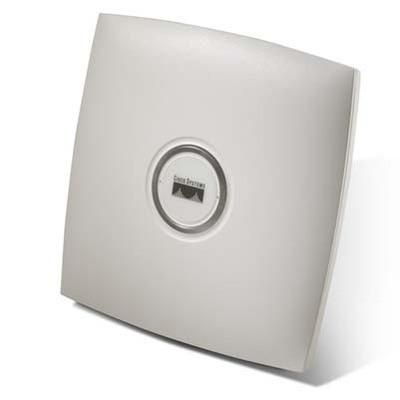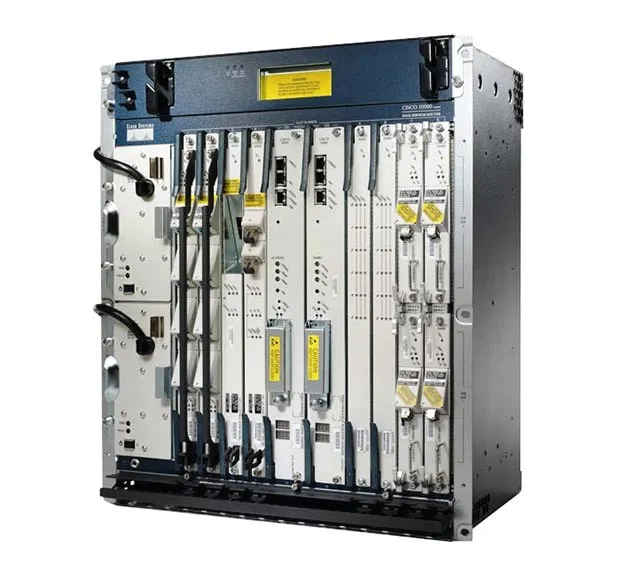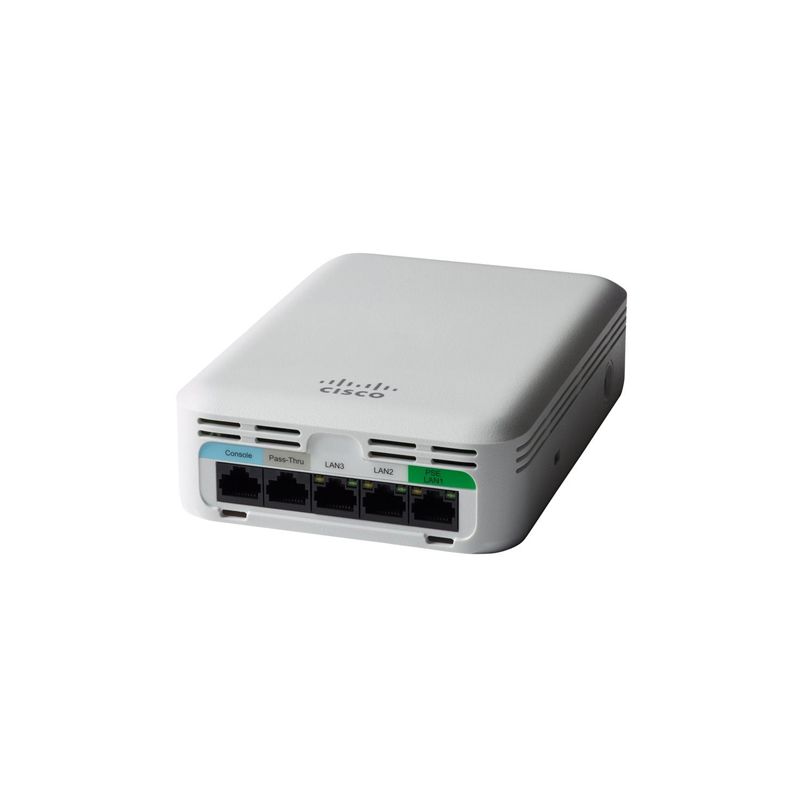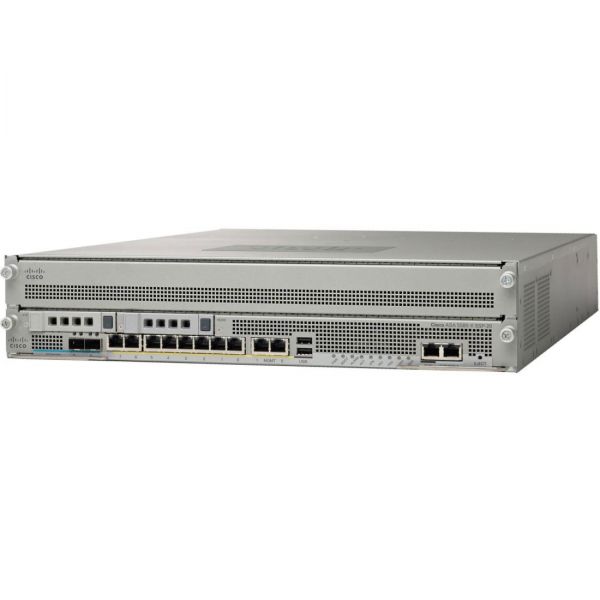Cisco® Aironet® 1130AG Series IEEE 802.11a/b/g access point AIR-AP1131AG-T-K9 provides high-capacity, high-security, enterprise-class features in an unobtrusive, office-class design, delivering WLAN access with the lowest total cost of ownership. With high-performing dual IEEE 802.11a and 802.11g radios, the Cisco Aironet 1130AG Series provides a combined capacity of up to 108 Mbps to meet the needs of growing WLANs. Hardware-assisted Advanced Encryption Standard (AES) or temporal key integrity protocol (TKIP) encryption provides uncompromised support for interoperable IEEE 802.11i, Wi-Fi Protected Access 2 (WPA2) or WPA security. The Cisco Aironet 1130AG Series uses radio and network management features for simplified deployment, along with built-in omnidirectional antennas that provide robust and predictable WLAN coverage for offices and similar RF environments. The competitively priced Cisco Aironet 1130AG Series is ready to install and easy to manage, reducing the cost of deployment and ongoing maintenance.
Quick Spec
Figure 1 shows the appearance of AIR-AP1131AG-T-K9.

Table 1 shows the quick spec.
|
Part Number |
AIR-AP1131AG-T-K9 |
|
Product Description |
802.11ag AP Integrated Antennas Taiwan Cnfg 1130AG Series Access Points |
|
System Memory |
• 32 MB RAM • 16 MB FLASH |
|
Input Power Requirements |
• 100-240 VAC; 50-60Hz (power supply) • 36-57 VDC (device) |
|
Power Draw |
12.2W maximum |
|
Dimensions (H x W x D) |
7.5 in. x 7.5 in. x 1.3 in. (19.1 x 19.1 x 3.3 cm) |
|
Weight |
1.5 lb (0.67 kg) |
|
Network Standard |
IEEE 802.11a, 802.11b, and 802.11g |
|
Data Rates Supported |
• 802.11a: 6, 9, 12, 18, 24, 36, 48, and 54 Mbps • 802.11g: 1, 2, 5.5, 6, 9, 11, 12, 18, 24, 36, 48, and 54 Mbps |
Compare to Similar Items
Table 2 shows the comparison between AIR-AP1131AG-T-K9 and AIR-AP1131AG-A-K9.
|
Part Number |
AIR-AP1131AG-T-K9 |
|
|
Product Description |
802.11ag AP Integrated Antennas Taiwan Cnfg 1130AG Series Access Points |
802.11a, .11g AP, Int Radios, Ants, FCC Cnfg 1130AG Series Access Points |
|
System Memory |
• 32 MB RAM • 16 MB FLASH |
• 32 MB RAM • 16 MB FLASH |
|
Input Power Requirements |
• 100-240 VAC; 50-60Hz (power supply) • 36-57 VDC (device) |
• 100-240 VAC; 50-60Hz (power supply) • 36-57 VDC (device) |
|
Power Draw |
12.2W maximum |
12.2W maximum |
|
Dimensions (H x W x D) |
7.5 in. x 7.5 in. x 1.3 in. (19.1 x 19.1 x 3.3 cm) |
7.5 in. x 7.5 in. x 1.3 in. (19.1 x 19.1 x 3.3 cm) |
|
Weight |
1.5 lb (0.67 kg) |
1.5 lb (0.67 kg) |
Get more information
Do you have any question about the AIR-AP1131AG-T-K9?
Contact us now via Live Chat or [email protected].
AIR-AP1131AG-T-K9 (USED) Specification
AIR-AP1131AG-T-K9 Specification |
||||||
|
Part Number |
AIR-AP1131AG-T-K9 |
|||||
|
Product Description |
802.11ag AP Integrated Antennas Taiwan Cnfg 1130AG Series Access Points |
|||||
|
Software |
Cisco Unified Wireless Network Software Release 4.0 or later. |
|||||
|
Data Rates Supported |
• 802.11a: 6, 9, 12, 18, 24, 36, 48, and 54 Mbps • 802.11g: 1, 2, 5.5, 6, 9, 11, 12, 18, 24, 36, 48, and 54 Mbps |
|||||
|
Network Standard |
IEEE 802.11a, 802.11b, and 802.11g |
|||||
|
Uplink |
Autosensing 802.3 10/100BASE-T Ethernet |
|||||
|
Frequency Band and Operating Channels |
Americas (FCC) • 2.412 to 2.462 GHz; 11 channels • 5.15 to 5.35, 5.725 to 5.825 GHz; 12 channels China • 2.412 to 2.472 GHz; 13 channels • 5.725 to 5.825 GHz; 4 channels ETSI • 2.412 to 2.472 GHz; 13 channels • 5.15 to 5.725 GHz; 19 channels Israel • 2.432 to 2.472 GHz; 9 channels • 5.15 to 5.35 GHz, 8 channels Japan (TELEC) • 2.412 to 2.472 GHz; 13 channels Orthogonal Frequency Division Multiplexing (OFDM) • 2.412 to 2.484 GHz; 14 channels Complementary Code Keying (CCK) • 5.15 to 5.25 GHz; 4 channels Japan-P (TELEC 2 (Japan2) Cnfg) • 2.412 to 2.472 GHz; 13 channels Orthogonal Frequency Division Multiplexing (OFDM) • 2.412 to 2.484 GHz; 14 channels Complementary Code Keying (CCK) • 5.15 to 5.35 GHz, 8 channels Japan-Q • 2.412 to 2.472 GHz; 13 channels Orthogonal Frequency Division Multiplexing (OFDM) • 2.412 to 2.484 GHz; 14 channels Complementary Code Keying (CCK) • 5.15 to 5.35 GHz, 8 channels • 5.470 to 5.725 GHz, 11 channels Korea • 2.412 to 2.472 GHz; 13 channels • 5.15 to 5.35, 5.46 to 5.72, 5.725 to 5.825, 19 channels North America • 2.412 to 2.462 GHz; 11 channels • 5.15 to 5.35, 5.725 to 5.825 GHz; 12 channels Singapore • 2.412 to 2.472 GHz, 13 channels • 5.15 to 5.35 GHz, 8 channels and 5.725 to 5.825 GHz, 12 channels Taiwan • 2.412 to 2.462 GHz, 11 channels • 5.25-5.35 GHz, 5.725 to 5.825, 7 channels |
|||||
|
Nonoverlapping Channels |
802.11a: Up to 19 |
802.11b/g: 3 |
||||
|
Receive Sensitivity (Typical) |
802.11a: 6 Mbps: -87 dBm 9 Mbps: -86 dBm 12 Mbps: -85 dBm 18 Mbps: -84 dBm 24 Mbps: -80 dBm 36 Mbps: -78 dBm 48 Mbps: -73 dBm 54 Mbps: -71 dBm |
802.11g: 1 Mbps: -93 dBm 2 Mbps: -91 dBm 5.5 Mbps: -88 dBm 6 Mbps: -86 dBm 9 Mbps: -85 dBm 11 Mbps: -85 dBm 12 Mbps: -84 dBm 18 Mbps: -83 dBm 24 Mbps: -79 dBm 36 Mbps: -77 dBm 48 Mbps: -72 dBm 54 Mbps: -70 dBm |
||||
|
Available Transmit Power Settings (Maximum Power Setting Will Vary by Channel and According to Individual Country Regulations) |
802.11a: OFDM: 17 dBm (50 mW) 15 dBm (30 mW) 14 dBm (25 mW) 11 dBm (12 mW) 8 dBm (6 mW) 5 dBm (3 mW) 2 mW (2 dBm) -1 dBm (1 mW) |
802.11b: CCK: 20 dBm (100 mW) 17 dBm (50 mW) 14 dBm (25 mW) 11 dBm (12 mW) 8 dBm (6 mW) 5 dBm (3 mW) 2 dBm (2 mW) -1 dBm (1 mW) |
802.11g: OFDM: 17 dBm (50 mW) 14 dBm (25 mW) 11 dBm (12 mW) 8 dBm (6 mW) 5 dBm (3 mW) 2 dBm (2 mW) -1 dBm (1 mW) |
|||
|
Range |
Indoor (Distance Across Open Office Environment): |
Outdoor: |
||||
|
802.11a: 80 ft (24 m) @ 54 Mbps 150 ft (45 m) @ 48 Mbps 200 ft (60 m) @ 36 Mbps 225 ft (69 m) @ 24 Mbps 250 ft (76 m) @ 18 Mbps 275 ft (84 m) @ 12 Mbps 300 ft (91 m) @ 9 Mbps 325 ft (100 m) @ 6 Mbps |
802.11g: 100 ft (30 m) @ 54 Mbps 175 ft (53 m) @ 48 Mbps 250 ft (76 m) @ 36 Mbps 275 ft (84 m) @ 24 Mbps 325 ft (100 m) @ 18 Mbps 350 ft (107 m) @ 12 Mbps 360 ft (110 m) @ 11 Mbps 375 ft (114 m) @ 9 Mbps 400 ft (122 m) @ 6 Mbps 420 ft (128 m) @ 5.5 Mbps 440 ft (134 m) @ 2 Mbps 450 ft (137 m) @ 1 Mbps |
802.11a: 100 ft (30 m) @ 54 Mbps 300 ft (91 m) @ 48 Mbps 425 ft (130 m) @ 36 Mbps 500 ft (152 m) @ 24 Mbps 550 ft (168 m) @ 18 Mbps 600 ft (183 m) @ 12 Mbps 625 ft (190 m) @ 9 Mbps 650 ft (198 m) @ 6 Mbps |
802.11g: 120 ft (37 m) @ 54 Mbps 350 ft (107 m) @ 48 Mbps 550 ft (168 m) @ 36 Mbps 650 ft (198 m) @ 24 Mbps 750 ft (229 m) @ 18 Mbps 800 ft (244 m) @ 12 Mbps 820 ft (250 m) @ 11 Mbps 875 ft (267 m) @ 9 Mbps 900 ft (274 m) @ 6 Mbps 910 ft (277 m) @ 5.5 Mbps 940 ft (287 m) @ 2 Mbps 950 ft (290 m) @ 1 Mbps |
|||
|
Ranges and actual throughput vary based upon numerous environmental factors so individual performance may differ. |
||||||
|
Compliance |
Standards Safety • UL 60950-1 • CAN/CSA-C22.2 No. 60950-1 • UL 2043 • IEC 60950-1 • EN 60950-1 • NIST FIPS 140-2 level 2 validation Radio Approvals • FCC Part 15.247, 15.407 • RSS-210 (Canada) • EN 300.328, EN 301.893 (Europe) • ARIB-STD 33 (Japan) • ARIB-STD 66 (Japan) • ARIB-STD T71 (Japan) • AS/NZS 4268.2003 (Australia and New Zealand) EMI and Susceptibility (Class B) • FCC Part 15.107 and 15.109 • ICES-003 (Canada) • VCCI (Japan) • EN 301.489-1 and -17 (Europe) Security • 802.11i, WPA2, WPA • 802.1X • AES, TKIP • FIPS 140-2 Pre-Validation List • Common Criteria (when running Cisco IOS software) Other • IEEE 802.11g and IEEE 802.11a • FCC Bulletin OET-65C • RSS-102 |
|||||
|
Antennas |
• 2.4 GHz • Gain 3.0 dBi • Horizontal Beamwidth 360° • 5 GHz • Gain 4.5 dBi • Horizontal Beamwidth 360° |
|||||
|
Security |
Authentication Security Standards • WPA • WPA2 (802.11i) • Cisco TKIP • Cisco message integrity check (MIC) • IEEE 802.11 WEP keys of 40 bits and 128 bits 802.1X EAP types: • EAP-Flexible Authentication via Secure Tunneling (EAP-FAST) • Protected EAP-Generic Token Card (PEAP-GTC) • PEAP-Microsoft Challenge Authentication Protocol Version 2 (PEAP-MSCHAP) • EAP-Transport Layer Security (EAP-TLS) • EAP-Tunneled TLS (EAP-TTLS) • EAP-Subscriber Identity Module (EAP-SIM) • Cisco LEAP Encryption • AES-CCMP encryption (WPA2) • TKIP (WPA) • Cisco TKIP • WPA TKIP • IEEE 802.11 WEP keys of 40 bits and 128 bits |
|||||
|
Status LEDs |
External: • Status LED indicates operating state, association status, error/warning condition, boot sequence, and maintenance status Internal: • Ethernet LED indicates activity over the Ethernet, status • Radio LED indicates activity over the radios, status |
|||||
|
Dimensions (H x W x D) |
7.5 in. x 7.5 in. x 1.3 in. (19.1 x 19.1 x 3.3 cm) |
|||||
|
Weight |
1.5 lb (0.67 kg) |
|||||
|
Environmental |
Operating • Altitude: 0 to 2500m • 32 to 104°F (0 to 40°C) • 10 to 90% humidity (noncondensing) Non Operating • -40 to 158F (-40 to 70C) • Up to 95% humidity (noncondensing) |
|||||
|
System Memory |
• 32 MB RAM • 16 MB FLASH |
|||||
|
Input Power Requirements |
• 100-240 VAC; 50-60Hz (power supply) • 36-57 VDC (device) |
|||||
|
Power Draw |
12.2W maximum |
|||||









Customer questions & answers
Customer reviews
0 out of 5
No reviews yet